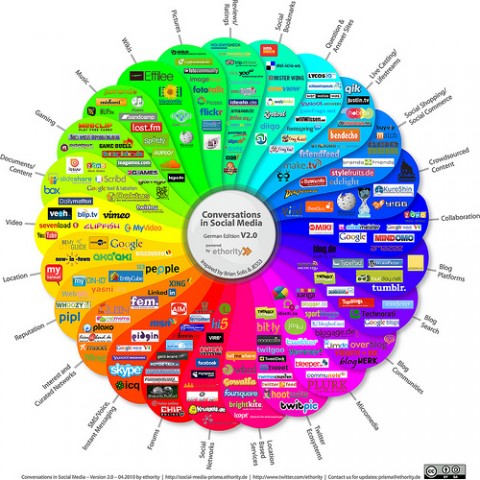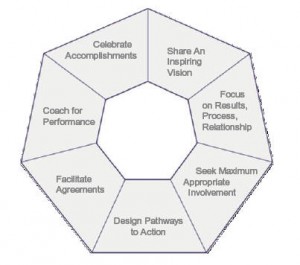November 17, 2011

|Photo by birgerking|http://www.flickr.com/photos/birgerking/4731898939|
I’ve really appreciated recent conversations with my colleagues Melinda Weekes and Gibran Rivera about how the use of on-line technologies is not just about the technology, but the new possibilities that they reveal for interaction and creation in both in person and virtual spheres. I’ve been impressed by stories about and personal experiences of some of the social media tools out there that show how they are able to help us supplement, extend, and innovate around collaboration for social impact. And I’m enjoying playing with some of these in my various client engagements. Here are a few tools for new possibilities, and I’m eager to hear what experiences you have had with them, as well as other ones not mentioned here, that have helped you realize the greater potential of collaboration and collective intelligence. Thanks to Matthew Dryhurst at Craigslist Foundation and the Working Wikily team for a number of these leads! Read More
May 11, 2011

|Photo by Arenamontanus|http://www.flickr.com/photos/arenamontanus/282327168|
Coming off of a couple of powerful days exploring power and privilege in the internal life and external work of the Interaction Institute for Social Change. So much still to process, and one of my immediate take-aways was our facilitators’ invitation to embrace paradox in the form of different perspectives and experiences, intentions and impacts, stated and espoused values. As one of our process agreements for our time together stated – “All of us, individually and collectively, embody paradox- identities, beliefs, and experiences that seem to contradict each other.” As has been stated elsewhere on this blog, and more elegantly by my colleague Gibran Rivera, the invitation is to hold apparent contradictions and tension long enough for something new to emerge, that moves us down the evolutionary path.
I leave you with the words of Gunilla Norris, from her book Sharing Silence, that came our way via OpenSource Leadership. Read More
January 5, 2011
 2011. A new year for us here at IISC to continue to move on the vision of ensuring that everyone engaged in social change work has some knowledge of and facility with Facilitative Leadership. Another year to restate and reframe the need for these critical skills to bring alive our goals of a more just and sustainable world. So why Facilitative Leadership? Here is my take . . . Read More
2011. A new year for us here at IISC to continue to move on the vision of ensuring that everyone engaged in social change work has some knowledge of and facility with Facilitative Leadership. Another year to restate and reframe the need for these critical skills to bring alive our goals of a more just and sustainable world. So why Facilitative Leadership? Here is my take . . . Read More
November 18, 2010

|Photo by --Sam--|http://www.flickr.com/photos/--sam--/4508338966|
Sometimes it takes science a little time to catch up with the world’s wisdom traditions. Recent research findings from a couple of Harvard psychologists, Matthew Killingsworth and Daniel Gilbert, confirm what meditation and mindfulness practitioners have long known – our ability to stay focused in the present has a strong correlation with contentment. Using data collected from a specially designed iPhone application, the researchers report that people spend nearly 47 percent of their waking hours thinking about something other than what’s happening in front of them. Furthermore, they find that, “Mind-wandering is an excellent predictor of people’s happiness. How often our minds leave the present, and where they tend to go, is a better predictor of our happiness than the activities in which we are engaged.” You still with me? Read More
September 8, 2010

|Photo by RandomChu|http://www.flickr.com/photos/randomchu/251646898/sizes/m/|
Just yesterday in a meeting of the Senior Associates at the Interaction Institute for Social Change, Gibrán Rivera made a comment about the ways in which being too fixed with an identity prevent us from getting to a place of liberation. I’ve heard him talk about this before – and am challenged by it every time he says it.
Read More
December 2, 2009
Come meander with me!
I’m reflecting on World AIDS Day.? The World Health Organization established World AIDS Day in 1988, and it’s been observed on December 1st ever since to raise awareness and focus attention on the global AIDS epidemic. In the early years, some museums would have “A Day Without Art,” shrouding artwork to demonstrate the impact of the epidemic.? And there were many other ways of observing – e.g., candlelight marches, displays of the NAMES Project AIDS Memorial Quilt, local awareness-raising or fundraising events around the globe. Read More
October 7, 2009
Recently at the Web of Change Conference at Hollyhock in British Columbia, there was a session on “Organizational Transformation,” facilitated in large part by Sam Dorman and Jason Mogus (with some thoughts thrown in by Gibran Rivera and myself). In large part, the session was discussing the ways in which organizations are wanting to incorporate technology and social media into their operations and need to shift structures and cultures to do so. Sam and Jason described that many organizations have traditionally been organized so that these functions were siloed into either a technology/IT function or a communications function – and often brought in after direction was set and strategy was developed as the way to spread the word. What has become clear is that this approach not only doesn’t work, but REALLY REALLY doesn’t work. It’s critical for the folks creating the technology strategy to be integrally involved in development of direction and strategy – not just the add-ons that come later.
One of the big questions at Web of Change was how do you do this? It’s a question about how you actually change the culture of an organization, once you’ve identified the direction you want the culture to head. We talked about the model of a collaborative organization – changing from traditional hierarchical organizations to a collaborative model (one of the things IISC works with organizations regularly to do). Gibran then started talking about how, in actuality, much of what’s being done technologically needs to be replicated in person – dispersed leadership, emergent thinking and self-organized, network approaches rather than centralized, hierarchical decision-making. So the question is: what would it take to really unleash the potential of individuals to create and implement projects that bring about real change – and what organizational structure would support this? Read More


 2011. A new year for us here at IISC to continue to move on the vision of ensuring that everyone engaged in social change work has some knowledge of and facility with Facilitative Leadership. Another year to restate and reframe the need for these critical skills to bring alive our goals of a more just and sustainable world. So why Facilitative Leadership? Here is my take . . .
2011. A new year for us here at IISC to continue to move on the vision of ensuring that everyone engaged in social change work has some knowledge of and facility with Facilitative Leadership. Another year to restate and reframe the need for these critical skills to bring alive our goals of a more just and sustainable world. So why Facilitative Leadership? Here is my take . . . 
